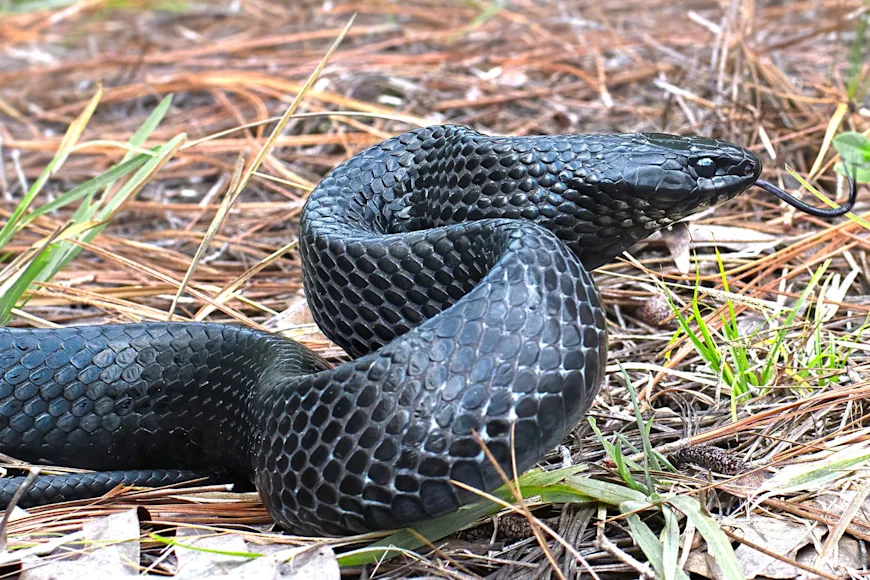Florida’s native snake populations are declining—and one of the causes likely stems from the state’s invasive python scourge. According to researchers, a 3-inch parasite, known as “snake lungworm” (originally from Asia) is currently causing severe illness and death in native snakes such as southern black racers, eastern coachwhips, and eastern indigo snakes.
_Learn how to upgrade your membership plan and get the new print magazine!
_
“Around 2012 is when we started seeing it in native snakes in South Florida,” Jenna Palmisano, a PhD student at the University of Central Florida, told FOX13
. “It’s likely that it was spilled over with the establishment of Burmese pythons in South Florida, but it’s also likely other invasive species that can serve as hosts have brought them in as well.”
Palmisano is the founder of SLAM
, or the Snake Lungworm Alliance & Monitoring, a project that documents and studies the foreign parasite. According to the organization, the snake lungworm has spread to at least 27 counties in the Sunshine State, including Palm Beach County, where it was recently detected in March 2024.
“On top of all the other threats our native snakes face (disease, invasive species, habitat loss … poaching) this emerging infectious disease may push, and has pushed some snake communities to extreme decline,” Palmisano told the Sun-Sentinel
. “I dissected a black racer last week that had 107 adult lungworms in its lungs.”
Lungworms are passed to snakes from smaller invertebrates such as lizards and toads. Once the parasite reaches its host, it bores through the intestines to reach the lungs, where it molts, lays eggs, and feeds on the snakes’ blood.
Read Next: Scientists in Florida Used a “Scout Snake” to Track and Kill a 16-Foot Invasive Python
While it’s unlikely that the lungworms could impact human health, researchers are looking into whether they can infect the lungs of different types of animals. So far, the parasitic species has not been the focus of much scientific research in Asia or here in the United States. But that’s quickly changing, especially as the lungworms continue to spread through Florida and likely soon into Georgia and beyond.






